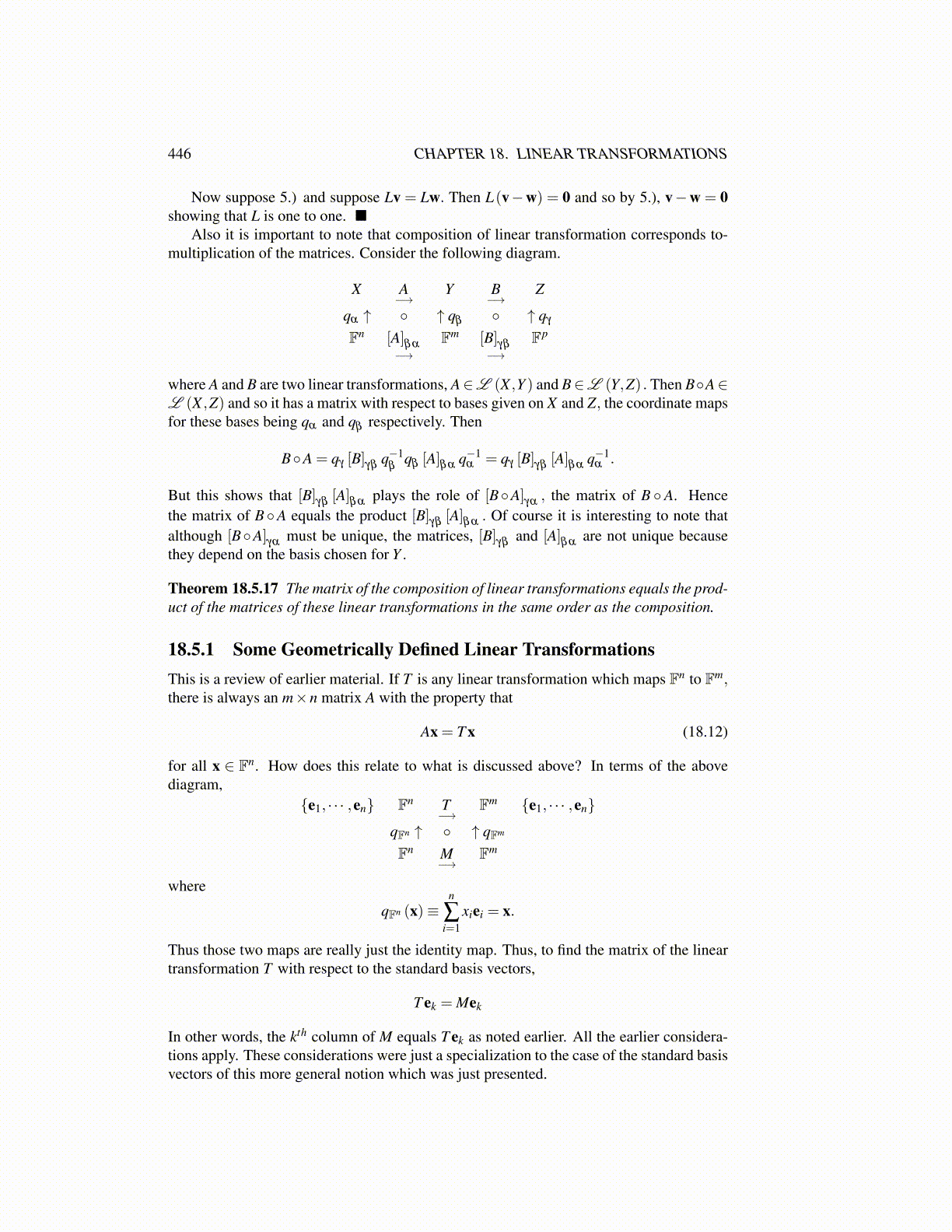
446 CHAPTER 18. LINEAR TRANSFORMATIONS
Now suppose 5.) and suppose Lv = Lw. Then L(v−w) = 0 and so by 5.), v−w = 0showing that L is one to one. ■
Also it is important to note that composition of linear transformation corresponds to-multiplication of the matrices. Consider the following diagram.
X A−→
Y B−→
Z
qα ↑ ◦ ↑ qβ ◦ ↑ qγ
Fn [A]βα
−→Fm [B]
γβ
−→Fp
where A and B are two linear transformations, A∈L (X ,Y ) and B∈L (Y,Z) . Then B◦A∈L (X ,Z) and so it has a matrix with respect to bases given on X and Z, the coordinate mapsfor these bases being qα and qβ respectively. Then
B◦A = qγ [B]γβq−1
βqβ [A]βα
q−1α = qγ [B]γβ
[A]βα
q−1α .
But this shows that [B]γβ
[A]βα
plays the role of [B◦A]γα
, the matrix of B ◦ A. Hencethe matrix of B ◦A equals the product [B]
γβ[A]
βα. Of course it is interesting to note that
although [B◦A]γα
must be unique, the matrices, [B]γβ
and [A]βα
are not unique becausethey depend on the basis chosen for Y .
Theorem 18.5.17 The matrix of the composition of linear transformations equals the prod-uct of the matrices of these linear transformations in the same order as the composition.
18.5.1 Some Geometrically Defined Linear TransformationsThis is a review of earlier material. If T is any linear transformation which maps Fn to Fm,there is always an m×n matrix A with the property that
Ax = T x (18.12)
for all x ∈ Fn. How does this relate to what is discussed above? In terms of the abovediagram,
{e1, · · · ,en} Fn T−→
Fm {e1, · · · ,en}
qFn ↑ ◦ ↑ qFm
Fn M−→
Fm
where
qFn (x)≡n
∑i=1
xiei = x.
Thus those two maps are really just the identity map. Thus, to find the matrix of the lineartransformation T with respect to the standard basis vectors,
T ek = Mek
In other words, the kth column of M equals T ek as noted earlier. All the earlier considera-tions apply. These considerations were just a specialization to the case of the standard basisvectors of this more general notion which was just presented.